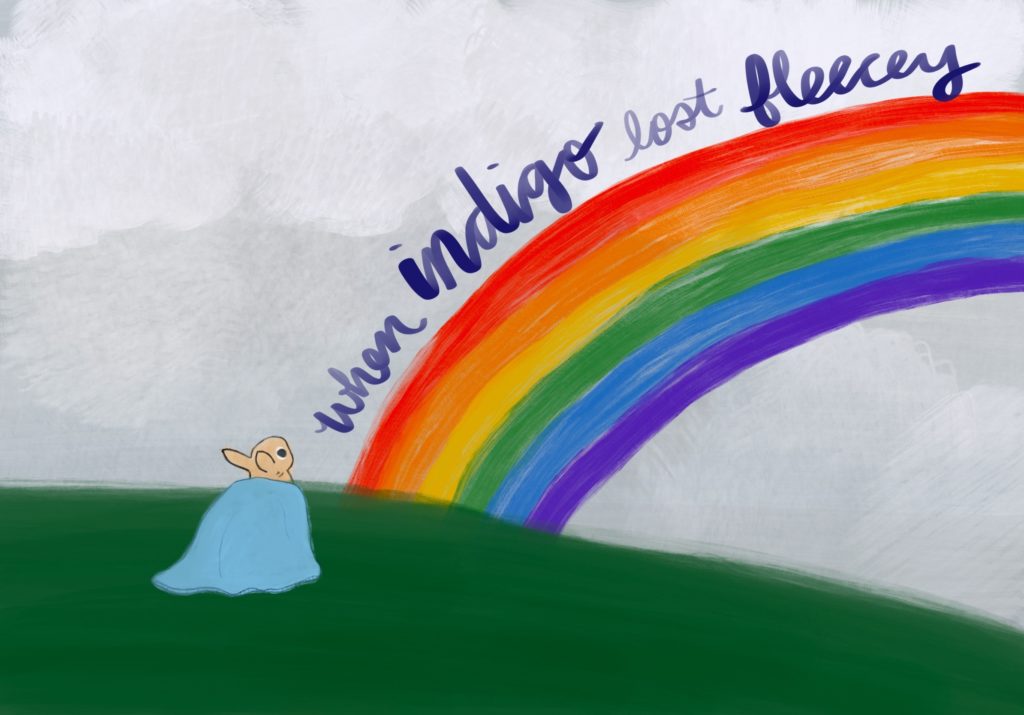 Assistant Professor of Psychology Marcus Rodriguez
Assistant Professor of Psychology Marcus Rodriguez
Pitzer College Assistant Professor of Psychology Marcus Rodriguez asked his students to explain complex ideas in a way his six-year-old daughter could understand. Quoting Einstein, he said, “If you can’t explain something simply, you don’t understand it well enough.”
His instructions are the result of an award he received from the Rick and Susan Sontag Center for Collaborative Creativity (aka the Hive) to teach psychology students how to write a children’s book. The Hive supports competitive grant programs for infusing creative collaboration into courses at The Claremont Colleges.
Students in his Internships in Psychology and Dialectical Behavior Therapy courses were given the choice of writing a final term paper or a children’s book. All jumped at the book option.
Their assignment was to create successive prototypes of their stories, with strong characters, a relatable theme for their target audience (between 4 and 8 years old), and a fresh and exciting plot—ideally with some suspense or an unexpected twist.
They also had to produce a query letter that included a compelling hook and a synopsis, describe their target audience, and explain the gap their story fills in the literature.
Rodriguez said he wanted students to reflect on the ideas they learned in class, emphasizing that students should present concepts in language easy enough for a child to grasp. “This takes time and imagination,” he said.
Rodriguez, who has been teaching psychology at Pitzer since 2018, is an expert in Dialectical Behavioral Therapy (DBT), an integrated, evidence-based cognitive-behavioral treatment that includes training in mindfulness, distress tolerance, interpersonal effectiveness, and emotion regulation. Rodriguez has written extensively on DBT and teaches it in his classes.
Rodriguez believes that people learn best when they can connect with the information with their hearts and minds. “Stories are emotionally evocative and make lasting impressions,” he said. “My guess is that in 10 years my students will forget about most of the essays they wrote, but they will likely remember the children’s book they wrote for my class.”

Julia Ho ’21, who took Rodriguez’s Internships in Psychology class in the fall of 2020, said in a blog post about the course that the children’s book project awakened her imagination and made her think about psychology concepts in a new way. Her story, geared toward very young children, became “When Indigo Lost Fleecey” about a rabbit who is afraid of the rain and unfortunately lives in a very rainy town. Fleecey is the comfort blanket Indigo takes with him everywhere. When Fleecey is blown away during a storm, Indigo is distraught. With help from friends, he learns how to dispel some of his fears and comes to realize that scary things will happen no matter what.
“Accepting this fact can make it a little bit easier to cope,” said Ho, echoing a DBT skill called radical acceptance, the practice of fully accepting reality, even if it’s undesired.
Along with the importance of clear and imaginative writing, Rodriguez emphasized collaborative learning in his classes. Students received feedback on their writing throughout the semester—in class workshops, peer review sessions, and conferences with Rodriguez outside of class.
“Most of the scientific writing in my field is done collaboratively,” he said. “Collaborative writing is a useful, lifelong skill. I teach my students to approach writing as a social act. The aim is to create community around writing to support this process.”
Three of Rodriguez’s students, Yilin Li ’22, Kimia Mahdavi (SCR ’21), and Madison Walker (SCR ’20), created a children’s book together as part of an Inside-Out course on Dialectical Behavioral Therapy, during which they worked with incarcerated students from the California Rehabilitation Center (CRC) in Norco, CA. Inside-Out courses are taught by Claremont Colleges faculty with incarcerated “inside” students and “outside” students from the colleges taking classes together.
After learning a mindfulness exercise, “Leaves in the Stream,” the three students agreed they would have benefitted from knowing how to do this much earlier in their lives. Although they couldn’t go back in time, they could teach the exercise to today’s children. The result was “Thought-Full Thelma.”
In the book, Thelma is distressed by “thousands of thoughts racing through her head” throughout the day. Then, on a particularly overwhelming day for her, she notices it is snowing outside. She uses her imagination to visualize her thoughts drifting away “just like the flakes of snow.”
The students said that writing the book challenged their understanding of DBT concepts by having them think creatively about topics adults sometimes find difficult to grasp.
“To present intricate therapeutic methodologies in a way a child would understand was no easy task,” they wrote in a blog post. “We came out of the project with a more thorough understanding of nonattachment and emotion regulation. It was truly one of the most enriching undergraduate assignments we have completed.”
Yusef Pierce ’21 is one of the incarcerated students who took Rodriguez’s DBT course. He wrote in a blog on the course that he learned that there is more to writing a children’s book than most people think. “Professor Rodriguez taught us that a good children’s book should be both unique yet relatable, and complex while remaining concise,” he said.
His book, “5 Simple Steps,” is about two young cousins and their grandmother, who teaches them five simple steps to getting what you want in relationships. Pierce, who is part of Pitzer’s new Inside-Out Pathway-to-BA program, relied on his mother’s tales about his two nieces, Rodriguez’s anecdotes from class, and interpersonal effectiveness methods used in DBT.
In Pierce’s book, two cousins, who are also best friends, often play together, with one of them always deciding what games to play and what the rules would be. The grandmother calls them in to her room to talk to them about fairness and consideration.
“I hope it can be used to help both children and adults in resolving interpersonal conflicts,” Pierce said.